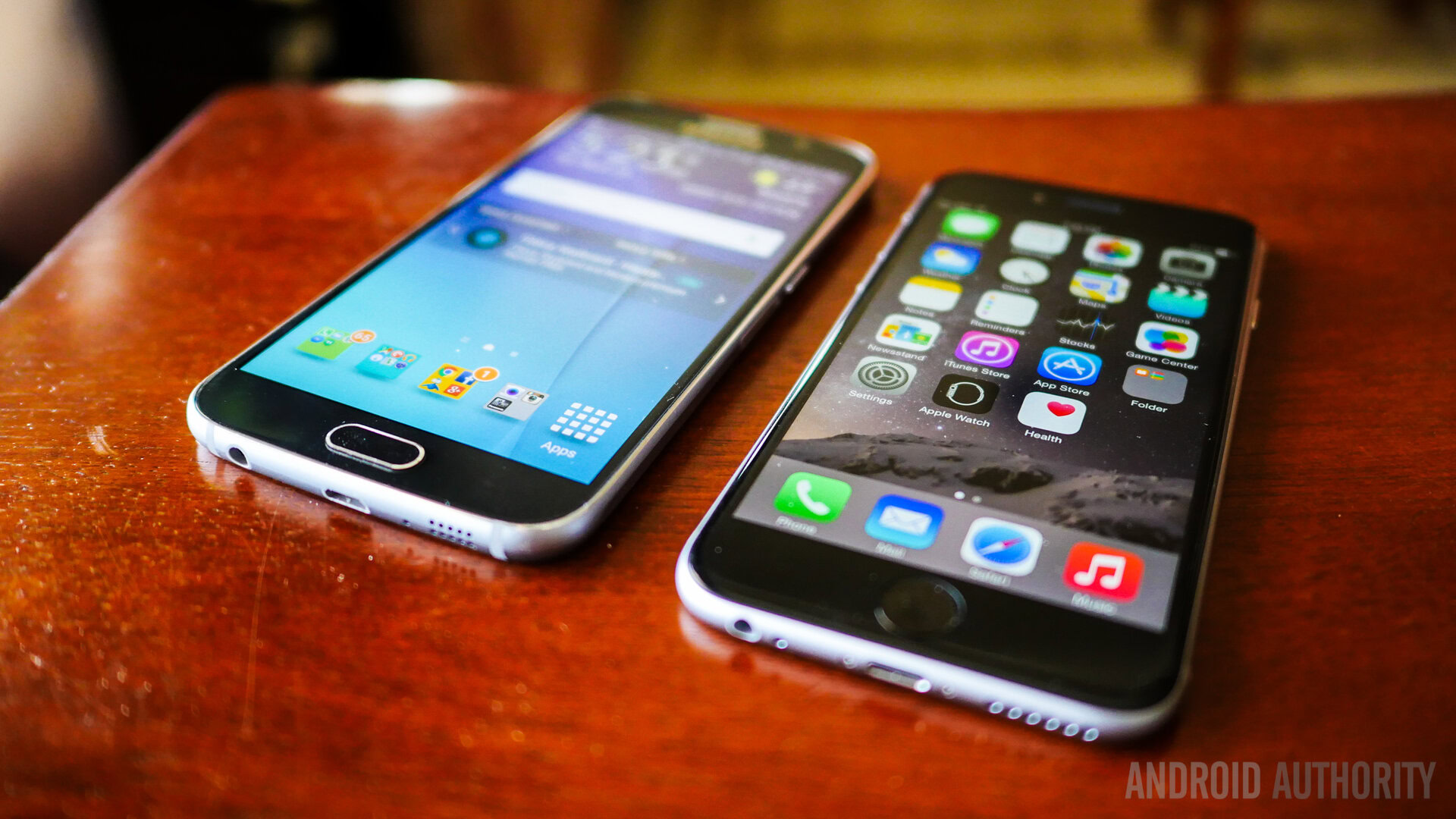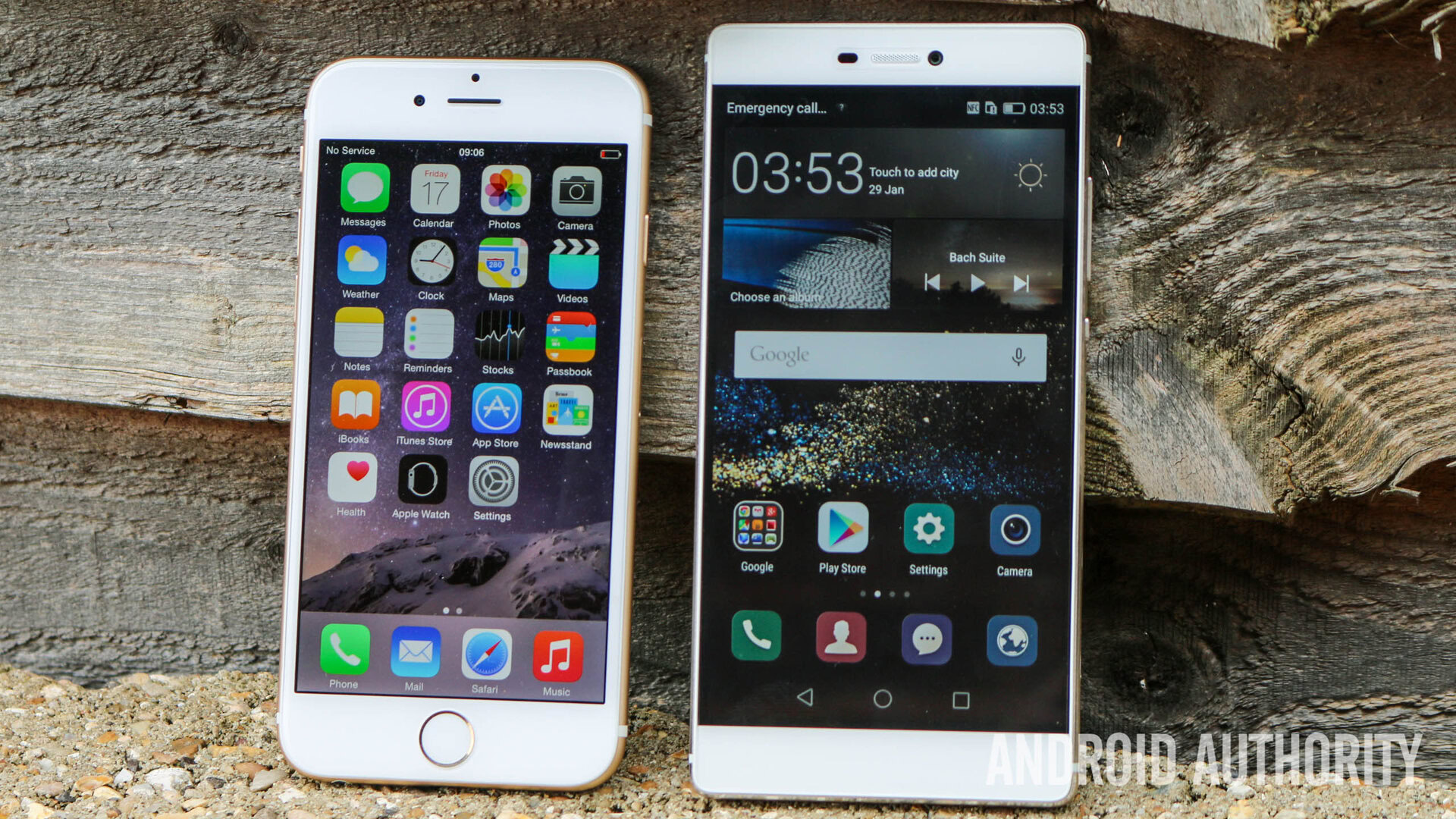Affiliate links on Android Authority may earn us a commission. Learn more.
Is Android losing ground to iOS in Europe?

2015 is well under way, with major Android players all announcing their flagship devices for the year. While we wait for the first sales figures to roll in, we can take a look to see how last year’s major releases shaped the current smartphone market. Kantar has just published its figures for smartphone market shares during the first quarter of 2015.
Kantar’s research finds that Apple’s iOS had continued to show growth in Europe’s five largest markets, with its share reaching 20.3 percent in March 2015, up 1.8 percent from last year. Android, on the other hand, has seen its market share slide by 3.1 percent to 68.4. This still puts Android some way out ahead of iOS in Europe, however, the implication is that iOS is gaining ground in Europe. But the trends are a little different when we break them down by country.
The biggest shift towards iOS has come from Great Britain, a traditionally strong market for Apple. iOS saw its share increase by 6.9 percent over the past 12 months while Android declined 4.8 percent, showing just how important the high-end market is in Great Britain. Germany shows a similar 5.7 decline for Android and a small up-tick of 3 percent for iOS, and Italy shares a similar trend. However, France saw a decline in iOS share from 23.4 to 19.4 percent, while Android stayed mostly stable. Spain remains tightly locked in a love affair with Android.
iOS grew again in the UK, but Spain remains tightly locked in a love affair with Android.
“In the first quarter of 2015, the iPhone 6 and 6 Plus continued to attract consumers across Europe, including users who previously owned an Android smartphone,” – Carolina Milanesi, chief of research at Kantar Worldpanel ComTech
Turning to the global trends, we can see a more significant swing between Android and iOS in some regions. China and Japan show the largest changes, with Android’s market share dropping by 8 percent in the former. In Japan, Android has now overtaken iOS as the largest mobile operating system, growing from 41.1 to 52.3 percent over the past year, while iOS has shrunk from 57.6 percent to 45.1. Australia has seen a smaller 5 percent market shift in favour of iOS, while the USA remains virtually unchanged.
Brazil and South America are still increasingly strong markets for Android, with the OS retaining a share just shy of 90 percent. Here Windows is actually more commonly used than iOS, which has been sitting around the 3 percent mark for a while.
There are a couple of key global trends worth identifying here. Although we don’t have the exact sales figures, we can conclude that the launch of the iPhone 6, most likely the Plus version, has done well to give iOS a boost in some key markets.
As you may expect, typically strong iOS markets have responded well to Apple’s new handsets, and Android has suffered a little as a result. We must not forget that customers had been hoping for a larger iOS device, which was previously a product segment held exclusively by Android. Screen size was cited as the main reason for buying a particular phone by both iOS and Android buyers, at 43% and 47% respectively. However, the latest iPhones have done little to help Apple reach into more price sensitive markets, including EU markets such as France and Spain.
While some Android brands suffered from design fatigue, a larger display gave Apple customers a reason to buy
“Thirty-five percent of consumers who bought an Android smartphone in 1Q15 said their decision was driven by receiving a good price on the phone. Another 29% said that getting a good deal on the tariff/contract was a factor in their purchase.” – Dominic Sunnebo, business unit director at Kantar Worldpanel ComTech Europe
For Android, emerging markets are still a particularly strong area for the OS, as the diverse range of handset manufacturers have moved to cater for budget and mid-range devices, which iOS is still not interested in. China and South America remain strong bases for Android, but we’ll have to see if this changes as the economic demographic shifts with time.

Sadly, Kantar doesn’t appear to have any data available for India, one of the world’s fastest growing smartphone markets, which we known is becoming increasingly saturated with low cost Android manufacturers. It would also be interesting to look at the broader European market, as this is an area where competitive Android brands, such as HUAWEI, were beginning to make traction last year.
Android’s surge in Japan may have come as a surprise, given that other established economic regions seemed to take to Apple’s flagships a little more last year and given the lack of appetite for Korean products in the country. Without the numbers it’s hard to say exactly which company has been responsible for this turn around, but rebranding exercises and nation specific marketing schemes may all have helped.
Looking at traditional high-end markets like the USA and Europe, there’s not been a big overall change in market positions, and we we can probably put the slight slump down to a mixed batch of high-end Android flagships last year. Brand fatigue was probably an issue, as many high-end manufacturers put out devices which were very similar to last year, while the iPhone 6 Plus was a more noticeable change for Apple customers. This year, things could be different, as Samsung and LG are changing their flagship formulas up more noticeably. Although HTCand Sony may suffer as a result of their similar designs.
Impressive early reports for Samsung’s Galaxy S6 may see a few percentage points swing back in Android’s favour
Looking further ahead, 2015 could see a further shake-up in Asia, as cut-throat price competition in India and China continues to put pressure on high-end manufacturers. Saturated US and European markets are unlikely to change much, but impressive early reports for Samsung’s Galaxy S6 and S6 Edge may see a few percentage points swing back in Android’s favour.
If you want a closer look at Kantar’s data for worldwide smartphone sales, feel free to play around with their global data tool below.